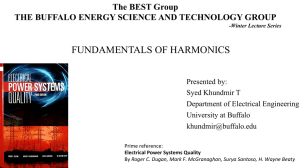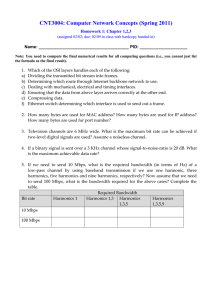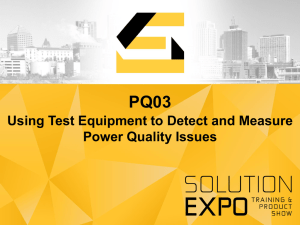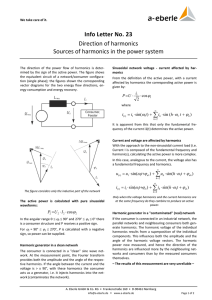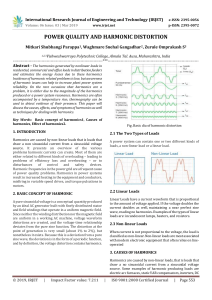Glossary - Schneider Electric
advertisement
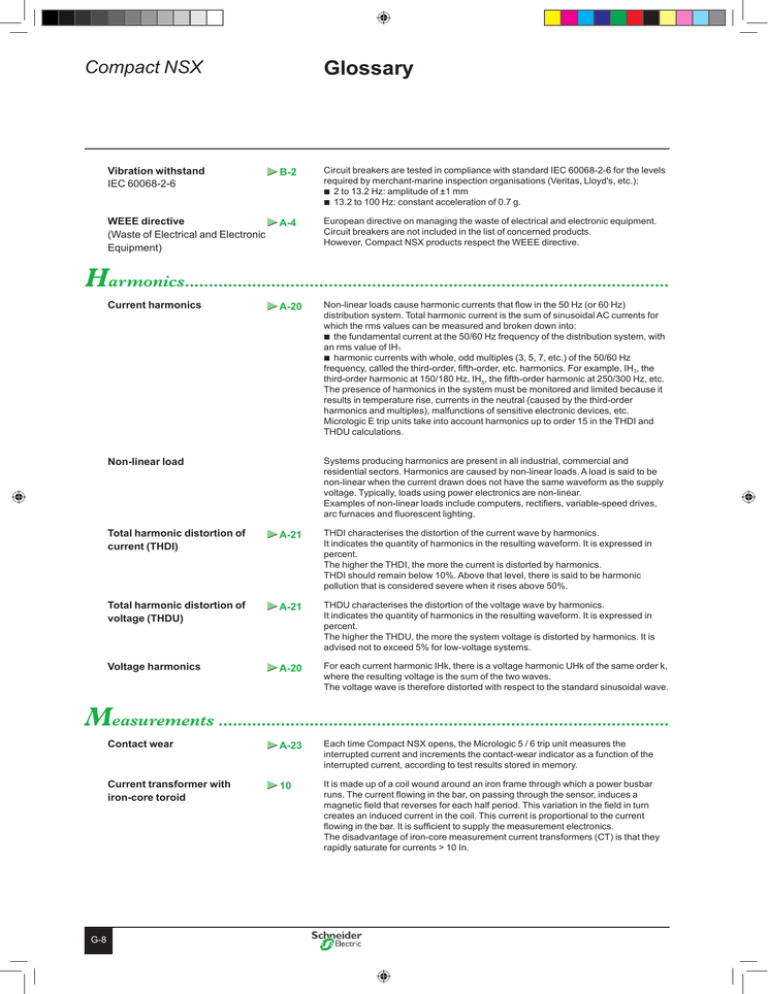
Glossary Compact NSX Vibration withstand IEC 60068-2-6 B-2 Circuit breakers are tested in compliance with standard IEC 60068-2-6 for the levels required by merchant-marine inspection organisations (Veritas, Lloyd's, etc.): b 2 to 13.2 Hz: amplitude of ±1 mm b 13.2 to 100 Hz: constant acceleration of 0. g. WEEE directive (Waste of Electrical and Electronic Equipment) A-4 European directive on managing the waste of electrical and electronic equipment. Circuit breakers are not included in the list of concerned products. However, Compact NSX products respect the WEEE directive. Harmonics..................................................................................................... Current harmonics A-20 Non-linear load Non-linear loads cause harmonic currents that flow in the 50 Hz (or 60 Hz) distribution system. Total harmonic current is the sum of sinusoidal AC currents for which the rms values can be measured and broken down into: b the fundamental current at the 50/60 Hz frequency of the distribution system, with an rms value of IH1 b harmonic currents with whole, odd multiples (3, 5, , etc.) of the 50/60 Hz frequency, called the third-order, fifth-order, etc. harmonics. For example, IH3, the third-order harmonic at 150/180 Hz, IH5, the fifth-order harmonic at 250/300 Hz, etc. The presence of harmonics in the system must be monitored and limited because it results in temperature rise, currents in the neutral (caused by the third-order harmonics and multiples), malfunctions of sensitive electronic devices, etc. Micrologic E trip units take into account harmonics up to order 15 in the THDI and THDU calculations. Systems producing harmonics are present in all industrial, commercial and residential sectors. Harmonics are caused by non-linear loads. A load is said to be non-linear when the current drawn does not have the same waveform as the supply voltage. Typically, loads using power electronics are non-linear. Examples of non-linear loads include computers, rectifiers, variable-speed drives, arc furnaces and fluorescent lighting. Total harmonic distortion of current (THDI) A-21 THDI characterises the distortion of the current wave by harmonics. It indicates the quantity of harmonics in the resulting waveform. It is expressed in percent. The higher the THDI, the more the current is distorted by harmonics. THDI should remain below 10%. Above that level, there is said to be harmonic pollution that is considered severe when it rises above 50%. Total harmonic distortion of voltage (THDU) A-21 THDU characterises the distortion of the voltage wave by harmonics. It indicates the quantity of harmonics in the resulting waveform. It is expressed in percent. The higher the THDU, the more the system voltage is distorted by harmonics. It is advised not to exceed 5% for low-voltage systems. Voltage harmonics A-20 For each current harmonic IHk, there is a voltage harmonic UHk of the same order k, where the resulting voltage is the sum of the two waves. The voltage wave is therefore distorted with respect to the standard sinusoidal wave. Measurements .............................................................................................. G-8 Contact wear A-23 Each time Compact NSX opens, the Micrologic 5 / 6 trip unit measures the interrupted current and increments the contact-wear indicator as a function of the interrupted current, according to test results stored in memory. Current transformer with iron-core toroid 10 It is made up of a coil wound around an iron frame through which a power busbar runs. The current flowing in the bar, on passing through the sensor, induces a magnetic field that reverses for each half period. This variation in the field in turn creates an induced current in the coil. This current is proportional to the current flowing in the bar. It is sufficient to supply the measurement electronics. The disadvantage of iron-core measurement current transformers (CT) is that they rapidly saturate for currents > 10 In.




